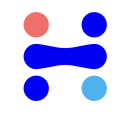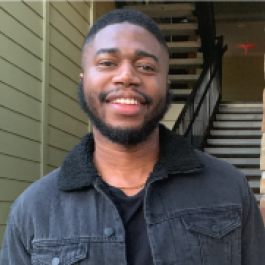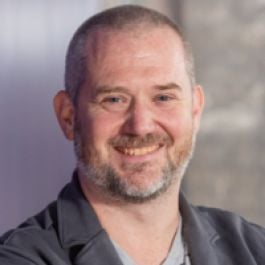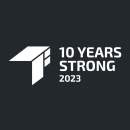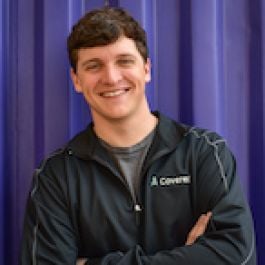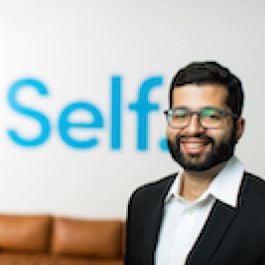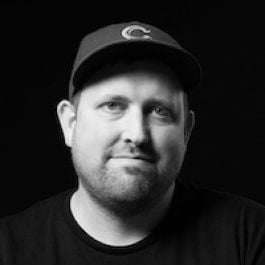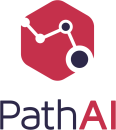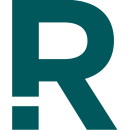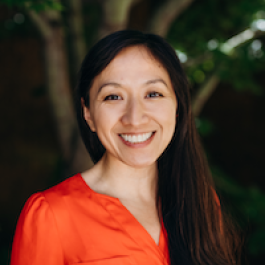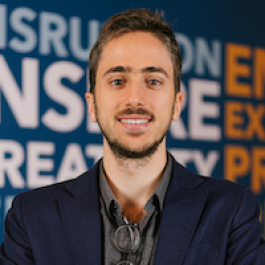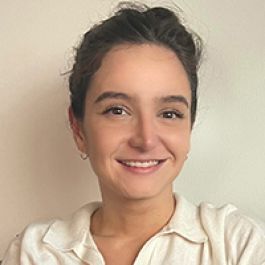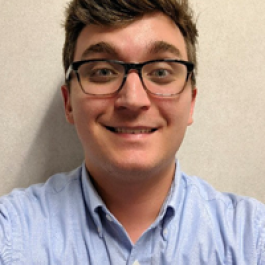An engineering nurse who vaccinated New Yorkers in her downtime. The Seattleite who helped save 182 African elephants’ worth of grocery waste through data science. The Bostonian brainiac who experimented on himself when the pandemic limited his user testing options. The Pasadenan prodigy utilizing artificial reality as a storytelling tool for live-streamed performances.
What do these seemingly disparate people have in common? They are all part of Built In’s inaugural class of Tech Innovator Award winners.
We launched these awards to honor the visionaries making a difference in communities around the country. These highly skilled technologists were nominated by colleagues for their tangible impact. Our judging panel was full of industry tech and talent experts who reviewed hundreds of nominations. The judges carefully selected this list of honorees who leverage technical knowledge, demonstrate ingenuity, embody leadership and push the boundaries of technology.
Meet The Judges of the Tech Innovator Awards
- Michelle Barry, Vice President of Engineering, Cadient Talent
- Jim Brennan, Chief Product Officer, Bettercloud
- Jan Mark Holzer, Senior Distinguished Engineer, Red Hat
- David "Hos" Hostetter, Digital Chief Technology Officer, Al Jazeera Media Network
- Rajesh Jayaraman, Chief Technology Officer, Ellevest
- Irina Krechmer, Chief Technology Officer, Blue Apron
- Larry Levy, Chief Executive Officer, Lucid Green
- Tat Ng, Serial Engineering and Technology Executive
- Douglas O'Flaherty, Global Ecosystem Leader, IBM Storage
- Lisa O'Keefe, Chief of Staff to Chief Technology Officer, Reddit
- Sarah Ratcliffe, Vice President of Product Management, Applied Systems
- Megan Walsh, Director of Executive Innovation, Microsoft Corp
Built In is committed to lifting up talent in tech, and boy, are these techies talented. These award winners have saved their colleagues thousands of hours of work, prevented millions of dollars in client losses and inspired the next generation of innovators. One team is so enamored with their innovator’s work that they even named a product after him.
Meet the 50 technologists breaking barriers and reimagining the future of tech.
Since joining the Mulberry Technology team, Bachet has helped guide the company’s machine learning solutions. He’s played a crucial part in solving urgent bottlenecks in the company’s production flows, proving his ability to tackle projects quickly and effectively.
With initiative and constant dedication, Bachet finds creative solutions to problems and adopts the latest techniques. He possesses both an eye for small details and a thorough understanding of overarching project goals. As both a data frontrunner and mentor, he’s proven his unrelenting dedication to the company.
Bobella’s influential work helped DailyPay’s mobile app go from being an experiment to a business cornerstone that now drives a significant portion of the company’s transactions. To get there, she led the complicated process of putting a CI/CD pipeline in place, and since that time there has not been a single failed deployment.
With the new CI/CD integrated, Bobella also took it upon herself to become the driver behind moving off of DailyPay’s ad hoc builds. She also led the creation of a new app workflow, improved the local development experience, leveraged Google Secrets Manager and wrote Node.js scaffolding scripts that work seamlessly with DailyPay’s local development experience.
Busby has been a creative leader in redefining how credit cards are issued, and he helped bring the tokenization of virtual cards for use with mobile digital wallets to life.
Busby was the first employee at fintech company Extend and created a legacy of innovation among employees. He has a knack for questioning the status quo by digging into existing processes, identifying gaps and improving upon them. He continues to lead the way in creating enhancements in mobile app design and functionality.
Operational technology is commonly used to manage industrial equipment like control valves, engines and other machines that regulate conditions such as flow rate, temperature and pressure in larger systems. This tech is often disconnected from the internet and runs on legacy systems that receive little technical support. In four months, Capellman led a team of 20 to build AI that’s capable of monitoring and detecting cyberattacks on antiquated OT systems, a project that kicked off the first day SparkCognition went remote due to the COVID-19 pandemic. While navigating remote work and pursuing a Ph.D. in cybersecurity, Capellman’s work and leadership resulted in seven SparkCognition patent filings around the DeepArmor product suite.
Carlson led the development of a Natural Language Processing toolkit that gives Grand Rounds Health the ability to dive deep into data and pull out insights that help guide members to higher quality clinical care.
Carlson realized that Grand Rounds Health needed to be able to understand a new set of data in a deep way to truly enable high-touch services. He went from conception to proposals to detailed project plans, building up a strong support system of other senior data scientists to work with him, and swiftly got the effort off the ground. Carlson coaches and mentors the other senior team members and technical leaders, works cross-functionally with product managers and customer relationship managers to determine the company’s highest needs, and builds a strong roadmap to deliver solutions.
Carlson drives SpotHero’s product development efforts. He’s always looking for new ways to innovate and has helped produce a variety of products, such as the company’s demand-based pricing platform, SpotHero IQ, which has boosted efficiency for parking operators.
With an open and inclusive mindset, Carlson is continually determined to find solutions while listening to others’ thoughts and opinions in the process. His impact on technological advancement has made it possible for the company to shape the way parking works for everyone.
Guided by a solution-oriented approach, Deevi has helped ensure peak performance and capacity growth in Kalderos’ data systems. Among the many projects he has accomplished, the one he is best known for is developing a new workflow that brought 50 percent runtime reductions and greater visibility. Deevi has also spearheaded at least two separate re-architecting efforts that have extended the company’s capacities.
Defined by passion and curiosity, Deevi is continually focused on producing greater results. An excellent communicator and patient teacher, he listens to others’ thoughts and opinions with equal amounts of compassion and understanding.
Stuck pipes paved the way for Egboga to create a huge win for himself and SparkCognition. During an oil and gas drilling operation, a stuck pipe is a costly and time-consuming challenge. Egboga used his background in petroleum engineering and data science to research and design a machine-learning solution to solve it, which saved a client an estimated $1.4 million per year by avoiding unplanned downtime. He also built new capabilities on top of existing SparkCognition tech that expanded the company’s core products and overall scalability. On top of all that, Egboga still found time to pursue a master’s degree and mentor new team members.
Finlayson’s technical innovation is best exemplified by a major client implementation he led in early 2020: The client, a Fortune Global 500 company processing hundreds of millions of dollars annually in card payments, wanted to use the CardX solution. To handle the company’s exhaustive list of requirements, Finlayson developed a vision for cutting through the complexity created by multiple enterprise resource plans, a legacy payments infrastructure and layers of web applications to deliver the experience that the client wanted both for their end customers and for internal stakeholders.
More importantly, Finlayson incorporated insights gleaned from this successful project into CardX’s overall product strategy and configuration settings. His incisive understanding of why this client had requested these particular settings allowed him to take this specific use case and develop a generalized, simple solution that many of CardX’s clients now benefit from.
Prior to joining Transfix, Gerstein earned data modeling and machine learning experience in finance and equities trading. These skills have allowed him to excel as a data science manager at Transfix.
He and his team developed automated pricing algorithms that resulted in a significant increase in bids won through daily auctions. The new algorithms were A/B tested after he and his team identified successful modeling strategies. Their efforts resulted in hours of saved work by pricing analysts, increased revenue for the business and lower costs for customers.
One of the core principles at Feedonomics is “go for the gap” — a euphemism for proactively seeking and fixing technical issues. Gokcen embodied that principle with style in her advocacy for and execution of a smooth implementation of native JSON export formatting.
In addition, Gokcen recently implemented a process whereby one to two requests are placed per week from various departments across the company. The achievement fostered collaboration, insight and empowerment for Feedonomics employees across multiple sectors.
One of the core pillars of Ekata’s solutions is its derived attributed factory, where machine learning models are built to help customers detect fraud. To ensure the company’s customers can keep up with release cycles and unlock the value, Gonzalez worked cross functionally with the data science, engineering and management teams to make the concept of side-by-side model management a reality.
The side-by-side model has been a game changer for Ekata because existing customers get up to six months to move to the latest scoring models as they incorporate innovations into their product systems, while new customers can adopt the updates immediately.
Data extraction around large investment documents and financial statements can be a challenge because locating tables with relevant information within them is not easy. To solve this issue, Goriunov combined his ability to see the forest through the trees with an affinity for user-first experiences to build a real-time object detection machine learning model for Canoe. Goriunov optimized the model — which was traditionally used for powering driverless cars — to detect tables before switching to different logic to extract data, all while the model trained itself and improved its accuracy. His efforts resulted in an automated platform for users, a 200 percent increase in data extraction accuracy and a 300 percent decrease in model-training time.
Hajek turned a demo tool into Covered Insurance Solutions’ core quoting platform, so they named it after him. The “Covered Hajform” tool started as a React-driven prototype Hajek built to showcase Covered’s ability to provide homeowners with personalized, automated insurance quotes in a user-friendly environment. Hajek immediately saw the value-add and scalability of a more formal solution so he worked cross-functionally to research and develop one.
The implementation now serves auto insurance shoppers in addition to homebuyers, more than doubling the company’s total addressable market. Hajek also contributed almost 50,000 lines of code to Covered’s three most recently updated repositories.
Hariharan has been making waves in the U.S. credit score system with his work at Self Financial, a credit building product and banking platform. He was influential in building the company’s credit reporting system from scratch. Hariharan also helped navigate the product’s integration with legacy bank systems to build a platform for everything from loan origination to compliance oversight to customer relationship management.
Not only is he able to develop innovative solutions on his own, but Hariharan also works as a force multiplier to motivate everyone around him to grow, too. His colleagues say that his overall contribution is a gamechanger for Self Financial.
Humiston was tasked with solving a long-standing personalization problem for the online musical instrument marketplace: Buyers couldn’t find all the gear they wanted on Reverb because it was too time-consuming to browse through listings. Similar to how Netflix recommends programs to watch based on one’s viewing history, Humiston developed a feature that recommends well-priced, popular listings that are relevant to users based on their past viewing and purchase history.
The “a-ha moment” happened when Humiston suggested leveraging an affinity-based approach instead of building something overly complicated. To get there, he parsed event and purchase data to determine each user’s brand and category affinities, and then used previously-developed machine learning models to find Reverb’s best-priced listings for popular products, generating a list of recommendations for each user based on their affinities. He then built an API that serves this data to Reverb’s core web application. Because Humiston is a musician, his expertise with instruments made it easier to validate the effectiveness of the algorithm, and the project was completed in under a month.
In his work heading marketing for a network of neighborhood primary care centers, Kakarla led the development of a cutting-edge technology stack that incorporated real-time data, stream processing, NoSQL databases and multifaceted security as core components of Oak Street Health’s architecture. In addition, Kakarla designed new technology to support the care-team facing application, Canopy.
The long-term result of Kakarla’s efforts — beyond vastly increased reliability, security and speed — included high care team user satisfaction and a 40 percent increase in the number of patients referred to high-quality specialists.
Kenaley has been instrumental in designing and implementing a powerful, publicly accessible API and webhook system at Pico, an audience development and monetization platform for creators. His colleagues say these types of features are seldom seen at early-stage startups, but Kenaley delivers with ease by leveraging existing resources. His dedication to detail delighted his team when they discovered that he’d included a logging history of webhooks to show how many people were using the new feature.
Not only is he innovative, but Kenaley’s colleagues say he is charismatic to boot. He has built a loyal team to help forge a new avenue in the creator economy.
In the time that Koehrsen has been a member of the PathAI team, he has helped revolutionize the company’s machine learning infrastructure multiple times. Koehrsen guides the company’s efforts to address reliability and performance issues while paying close attention to the usability of their current system, which he helped create.
Being both ambitious and practical, Koehrsen always strives to find the core of an issue before diving into solutions. With a holistic approach to engineering, he has made an impact on the entire engineering community at PathAI.
Laing took on a pioneering attitude when she left the healthcare industry to join 3Play Media around a year ago. In her new field, Laing was immediately tasked with managing, defining and designing a human-enabled live captioning platform — a brand-new product for the company. Laing tapped into her analytical-yet-open-minded nature to work with engineers and test the boundaries of what the product — and the team — was capable of. The result was a live-captioning platform with online ordering, streamlined encoding and captions embedded in the media player. Customers had been asking for those capabilities for years and the product also opened 3Play to net new business opportunities.
Since joining the Ribbon Health team, Lal has played an integral role in helping the company manage complex data. He led its adoption of Lambda functions to power significant workflows across the company’s tech ecosystem. His use of serverless tools empowered his team to focus on solving core problems rather than building and maintaining infrastructure. By implementing novel data science concepts, Lal was able to realize the company’s dream of developing a location-based product, further driving the company’s mission to simplify healthcare.
As a “full-stack problem solver,” Lal is often leading brainstorming sessions, driving ideation and implementing iterative solutions, all while retaining a humble and collaborative attitude. What sets Lal apart is his ability to not only see the vision, but also follow through on it.
Larrue leads Cohesion’s efforts to tackle novel, significant problems in commercial building automation. She spearheaded the company’s Indoor Air Quality Optimization program, which leverages AI to read sensor data, learn patterns to mitigate harmful air pollutants in real time and optimize building ventilation. Larrue’s work in this program has enabled the existence of healthier and sustainable commercial real estate.
Larrue possesses a constant eagerness to learn new skills and experiment with new concepts. Her fearlessness and collaborative nature has enabled her to drive change across the industry.
Little helped change ActionIQ forever with a campaign to revolutionize how the customer data platform took care of incident management and operations. She built out a harmonious combination of tools, conventions, processes and culture that helped the company reduce its volume of incidents by almost 80 percent in just a year. The result: thousands of hours of time back for the company, an increased ability to improve, a more psychologically safe organization and a markedly more reliable product.
Little’s interdisciplinary skill set — combining her talents as an engineer, teacher, nurse and manager — all converged seamlessly into this single project. During her off-hours, Little took the time to vaccinate New Yorkers in her capacity as a nurse.
McMahon has played a large role in developing touchless controls for commercial buildings. His analytical skills and strategy have helped him guide Cohesion’s efforts to deliver a more intelligent elevator experience. McMahon also led the creation of a framework for future integrations and APIs to scale the business at speed.
Defined by an ownership mentality, McMahon continually thinks through problems carefully and identifies risk factors upfront, which has been highly advantageous to the business. Despite the complexity of the problems he tackles, McMahon always finds simple, smart and secure solutions.
Mong was one of the first engineers on a small machine learning platform team at Momentive — formerly SurveyMonkey — that was tasked with stabilizing a few volatile models in production. Her solution: rearchitecting the platform to meet the growing adoption and demand for ML-enabled solutions within the product, all before a wide range of MLOps tooling was available for on-premise use cases.
Mong’s work ethic, talent and experimental techniques led to incredible results, including a more than 90 percent reduction in time-to-production for new ML models, an exponential improvement in API performance and the ability to scale to the number of models the company will need over the next ten years.
Morman is primarily responsible for an in-house portfolio accounting system called Luca, which involves normalization, aggregation, reporting, analytics and quality assurance. Morman used his mathematical and quantitative background to translate simple but highly symmetric and often redundant formulas to a simple and effective data structure.
For Bridge Financial Technology, this had an immediate impact. At the beginning of the year, Luca was already saving the company $500,000 annually compared to what they would have spent with the previous solution. That number today is over $1.5 million. As a small startup with only Series A backing, these numbers represent significant savings. Furthermore, while the CS team used to spend 50 percent of their time on data management prior to Luca, such concerns now occupy less than 10 percent of their days.
Pandey has made countless contributions at Varo Bank: founding the quality engineering team, breaking down silos between the development and quality departments, developing a three-layer automated testing model, creating an automation engine for testing across the bank’s technology, and building an end-to-end system with the capacity to run millions of tests quickly.
Colleagues describe Pandey as a master communicator who leads by example and is a “delight” to work with. Her sense of ownership over problems and clear, collaborative leadership style have earned her enthusiastic accolades from colleagues.
Paugh has had an outsized impact at Starburst since joining less than a year ago. She and her team of eight managed to improve observability and alerting across dozens of Starburst’s Kubernetes clusters, streamline data ingestion and memory management in the Thanos Receiver they implemented, and patch up security holes across the new system. Overall, the team’s efforts under Paugh’s management reduced customer incident response from days to only 30 minutes. This new observability platform will allow Starburst to scale its platform and give the product team real-time insight into customer activity and queries.
Ramirez helped save 182 African elephants’ worth of grocery waste through her work at Shelf Engine, a grocery inventory optimization platform. Beyond preventing waste, her innovation has resulted in increasing grocers’ profit margins, creating efficiencies during a labor crisis and improving the customer experience.
Not only is Ramirez a talented data scientist and tech strategist, but her vision and coaching skills set her apart from the pack. Thanks to her charismatic leadership, Ramirez has been able to build a “dream team” in Seattle, one of the most competitive labor markets in tech. Her colleagues say that her contributions to forecasting and optimization technology will continue to scale and prevent waste to the benefit of the world.
Rao was an automation wizard for a delivery pipeline created at Options Clearing Corporation, an equity derivatives clearing organization. Her efforts removed the manual work of ensuring all compliance documents are complete, freeing up resources for the team to work on more valuable endeavors.
Rao loves to experiment when she encounters new problems, which makes her a great fit for her role. She is extremely dedicated and takes complete ownership of every challenge until there is nothing more left to be done.
Because third-party cookies will soon be a thing of the past, Roberts’ work has garnered great excitement and satisfaction from Simon Data’s clients. While attempting to implement a technology that enables companies to market to customers without knowing their email addresses, Roberts leveraged learnings from the first implementation, updated existing technical specs, created new specs, collaborated with other teams and mapped out choices and sample workflows.
To make the project a reality, Roberts worked on the guts of the identity rules engine — which is customizable and written in Python — while onboarding and mentoring other engineers.
After spending a decade at Oracle honing his testing and implementation skills, Sanchez joined AlertMedia and immediately got to work evolving the Global Threat Intelligence product and building a new in-house team around it. To optimize the product, the software engineering manager leveraged Redis and AWS Lambda to streamline AlertMedia's internal systems so that analysts could digest information and alert customers when an event might threaten their assets. He built the product to handle millions of parallel geospatial calculations a day, and the product now enables analysts to identify the impact of threats — and solutions — more rapidly and efficiently than ever.
Sanghvi has helped envision, influence, build and scale Grand Rounds Health’s technology. Alongside her teammates, Sanghvi developed a search engine that gathers real-time and historical information about patients to connect them with providers who most closely match their needs and preferences.
Embodying deep technical expertise, strong leadership qualities and strategic thinking, Sanghvi has made an impact across the organization. As a highly intelligent, determined individual, she constantly strives to drive change in the healthcare space.
Over the last year, Santhanakrishnan worked on one of SMS Assist’s most pressing strategic initiatives: their service provider platform. The initiative involved creating a centralized and streamlined platform to recruit and manage service providers — such as HVAC, plumbing or snow removal companies — that could scale with SMS Assist’s business.
Prior to this product launch, she discovered that the company’s internal teams used a timeworn process of individually reaching out to potential new service providers and tracking them manually via spreadsheets and sticky notes. Santhanakrishnan not only created a more powerful service provider platform, but also a completely new piece of intellectual property: a self-service map-drawing tool. The patent-pending product is projected to have a ten times return on investment over the next decade.
Since joining FloSports, Schirmer has helped the company’s product team deliver greater value to users. During the pandemic, he led the company’s development of a virtual, live-streaming platform feature, which supported more than 173 virtual sports competitions. In doing so, he saved the company from major revenue loss and enabled thousands of athletes to participate in events and watch their peers compete.
As a highly independent and responsible individual, Schirmer understands FloSports’ business structure and its impact on customers. His work has proven to be critical to the company’s success.
Schultz has been instrumental in AMP Robotics’ continuous transformation. With a background in electrical, mechanical and software engineering, Schultz has proven his ability to accelerate product development and hit critical timelines.
Throughout his time at the company, Schultz has demonstrated a keen interest in fostering future engineering talent, serving as a coach and lead mentor for robotics teams while teaching online courses. He has also served as a board member for makerspace Solid State Depot, which is a physical place for gathering and collaboration on creative projects.
Shah plays a pivotal role in protecting both RingCentral and its customers from cybercriminals. Working in tandem with engineering and business intelligence teams, Shah has helped enable the company to quickly reduce the impact of fraud. Due to his visionary perspective, Shah has also successfully predicted new forms of fraud.
Shah is always eager to find fresh, innovative solutions to protect businesses, and his cross-functional skills make it possible to keep all teams aligned and successful. Additionally, his passion for helping others has made him a mentor for junior team members.
Shanti rooted a great degree of his success at Kin + Carta in being innovative. Within a couple months of joining, the technical consultant pitched and served as architect and tech lead of KinCoin: a blockchain-based peer-to-peer recognition platform that’s captured 30,000 moments of recognition in two years.
Then, during Kin + Carta’s shift to remote work last year, Shanti led the Labs365 team in launching the Kinnect Challenge: a five-month hackathon dedicated to forming meaningful remote connections across the company. His team operated incubators that featured 50 dispersed employees, and then went on to build three tech solutions (a simulation of the Chicago office, a randomized meeting platform and a social engagement app). Shanti’s efforts boosted morale across the business and helped hundreds of employees feel more connected during a tough year.
With more than a decade of software development experience, Shubham grew very familiar with the shortcomings of existing embedded analytics solutions for developers. So he built a new one at ThoughtSpot dubbed “ThoughtSpot Everywhere.” The current principal engineer and director of engineering independently researched the market need for a developer-driven embedded analytics tool before launching ThoughtSpot Everywhere this past spring. It features some of the developer community’s most requested features like a sandbox test environment, a developer portal and customizable APIs. Shubham tapped into his natural curiosity and determination to spearhead creation of a tool that he — and the greater developer community — was asking for.
Stanley was instrumental in building Enten, brain-computer interface headphones that are designed to help people reclaim their time and increase their productivity. In his position at Neurable, he developed new functionalities for the headphones and even experimented on himself — in his home — when the global pandemic made it impossible to test on others.
When creating these neurotech-enabled headphones, Stanley focused on the silent vocalization feature, which allows users to send voice-free and hands-free commands to control something on their computer, like a Spotify playlist. Stanley embraced the challenge of building headphones with only 10 electrodes and began collecting data with electrode stickers around his face, slowly moving into the cheek, mouth and ear once he was convinced that strong electromyographic signals would be feasible there. Despite the challenges of working without test subjects, Stanley built Enten’s final silent vocalization demo in only six months, the results of which will be available in the new rendition of the product in 2022.
Thomas is a tour de force who inspires the people around him by acting with integrity every day.
He led the conception and creation of an internal payment layer tool that consolidates, simplifies and solidifies different payment processors into one common interface and setup. Thomas deftly coordinated the wildly disparate parts of this project for Appetize, which offers cloud-based point-of-sale software for food services and retail. His colleagues characterize the tool as a “significant accomplishment” for the industry.
Since joining the SIMON team, Tortora has been operating at the leading edge. As a recipient of the company’s Innovation Champion title, she recently spearheaded the development of a new revenue stream that has proven to be critical to the business’ growth and client success.
Tortora’s curiosity and engagement has made her a role model for other female engineers at the company. As a co-leader of the SIMON Women’s Network, she shines a light on impactful women across the industry and amplifies voices of women throughout the organization.
After Fast Radius established a list of a dozen geometric checks to provide real-time feedback on areas where a manufactured part might fail or have significant risk, Turkoglu single-handedly developed the fundamental algorithms and mathematics that underpinned almost the entire list within a few weeks.
For the better part of a year, Turkoglu was also responsible for the implementation of the algorithms and mathematics that he ideated. He worked systematically to implement the fundamental algorithms in Rust, which was a new language for him. The first set of checks went into production a few months after the effort began — well ahead of company expectations — and along the way he also integrated new team members, allowing Fast Radius to finish multiple checks in parallel.
Unadkat tackles his role with intention and determination. When the pandemic put a financial strain on Logic20/20’s clients last year, Unadkat went to work on a new product that helped the organization reduce churn and deliver a greater customer experience.
Throughout his time at Logic20/20, Unadkat has led numerous projects that have had significant impact on improving the customer experience. Guided by a strong lean-in mentality, Unadkat has stepped outside of his day-to-day work to host webinars and write articles, all of which contributed to the company recognizing him with its Logical Values Award.
Characterized by a productive and efficient mindset, Utt guides GR0’s product development initiatives. In the wake of Google’s Expertise, Authority and Trust update, Utt developed a plug-in that allows companies to ensure compliance without further web development and design.
Utt possesses the ability to discern nearly any technological situation and translate it in a way that makes it easy for others to understand. With a strong work ethic and sense of determination, he consistently tackles important issues on behalf of the company.
Over his 20-year career, White has mentored hundreds of people, created how-to guides to help engineers understand new processes and lead meetups that attract more than 6,000 attendees.
White tapped into his affinity for helpfulness to roll out a Global Reliability Operating Model at ADP, which represents a new culture of ownership-driven outcomes rooted in document-driven engineering, self-service onboarding and an obsession with the customer experience. The model ultimately gave developers clearer direction, more agency and improved job satisfaction while allowing them to deliver more innovative code to customers faster and with fewer mistakes.
Williams recently led the development of a new Whip Media solution called the Demand Score, which predicts how a TV or film title will perform among a target audience on a specific platform or within a specific country or region. The tool brings tens of millions of consumer insights into the licensing decision-making process, enabling buyers and sellers to identify the right content for the right audience.
To build the Demand Score, Williams helped quantify how to pair content with an audience, identify where there may be gaps in the data, and create ways to resolve those gaps. A key part of the process was to create an abstract digital representation for both content and audience to make predictions when data was missing and model for unknown titles. Williams also simulated multiple scenarios that buyers and sellers face in the content licensing process to determine how to improve it.
Williams has made a dramatic impact on the testing capabilities at Cedar, a healthtech software company. He was the driving force behind Enclave, a testing solution that allows the company to evaluate product integrations with clients before going live. This was a gamechanger for the healthtech company, where data handling is subject to strict security and compliance requirements. Not only did Williams bring a complex software solution to bear with ease, but he also did it with a smile on his face and an attitude of service that embodies the company culture.
Woo has been a part of the Encore team since its early days. As head of XR, she has single-handedly shaped the future of live-streamed performances, playing a pivotal role in envisioning the company’s approach to artificial reality as a live storytelling tool. Woo has helped develop various features and products over the years, including a new technical mechanism for “triggerable” AR.
Leveraging her knowledge of 2D and 3D design, Woo is constantly pushing the boundaries of what is technologically possible. She has a deep interest in supporting the next generation of musicians and is dedicated to ensuring every artist’s vision comes to life through the marriage of technology and creative design.
Zhang spent the last two years producing models for Enova’s Fair Value machine learning tool: a forecasting method that estimates the lifetime measure of worth for the company’s financial products. Zhang standardized the team’s coding style and development tools so they could process some of the company’s largest data sets. The team successfully built automation and cloud-based data sourcing around six different product sets that touched almost every area of the business. Zhang did all this innovating while keeping diversity, equity and inclusion at the forefront of her work, ensuring each member of her team had a voice and felt valued.








